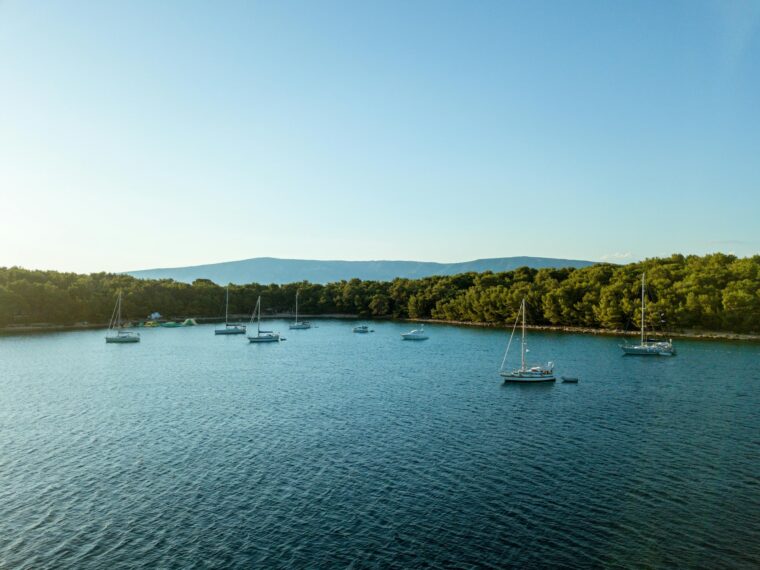The Adriatic Sea stretches like a sapphire ribbon between the Balkan and Italian peninsulas, cradling over 1,300 islands along its crystalline waters. This dazzling archipelago, primarily scattered along Croatia’s eastern coastline, represents one of Europe’s last unspoiled maritime paradises. From the verdant shores of Mljet to the sun-drenched beaches of Hvar, from the ancient stone villages of Korčula to the remote wilderness of Vis, the Adriatic islands offer a kaleidoscope of experiences that captivate the imagination and rejuvenate the spirit.
Island hopping along this magnificent coastline has emerged as the quintessential way to experience the region’s diverse charms. Unlike conventional travel where visitors are confined to a single destination, island hopping transforms the journey itself into an adventure—each day bringing new horizons, fresh discoveries, and unexpected delights. As you sail from one island to another, the Adriatic reveals itself in layers: first through its stunning natural beauty, then through its rich historical tapestry, and finally through the authentic cultural experiences that have remained largely unchanged for generations.
What makes the Adriatic Coast truly exceptional is this harmonious blend of elements. Here, nature’s splendor manifests in secluded coves with waters so clear you can count pebbles on the seabed from your boat. History comes alive in UNESCO-protected medieval towns where narrow marble streets echo with stories spanning millennia. Culture thrives in local konobas (taverns) where fishermen serve the day’s catch alongside homemade wines, and traditional klapa songs occasionally fill the warm evening air.
Whether you’re navigating between islands on public ferries, joining an organized tour, or chartering your own yacht for ultimate freedom, island hopping along the Adriatic Coast promises an unparalleled adventure that combines stunning landscapes, historic towns, crystal-clear waters, and authentic cultural experiences into a journey that will linger in your memory long after your tan has faded.
The Adriatic Sea: A Geographic Wonder
The Adriatic Sea stands as one of Europe’s most remarkable maritime treasures, a narrow body of water stretching approximately 500 miles from the Gulf of Venice in the north to the Strait of Otranto in the south, where it meets the Ionian Sea. This elongated basin, nestled between the Italian Peninsula to the west and the Balkan Peninsula to the east, represents the northernmost arm of the Mediterranean Sea and encompasses an area of roughly 50,000 square miles.
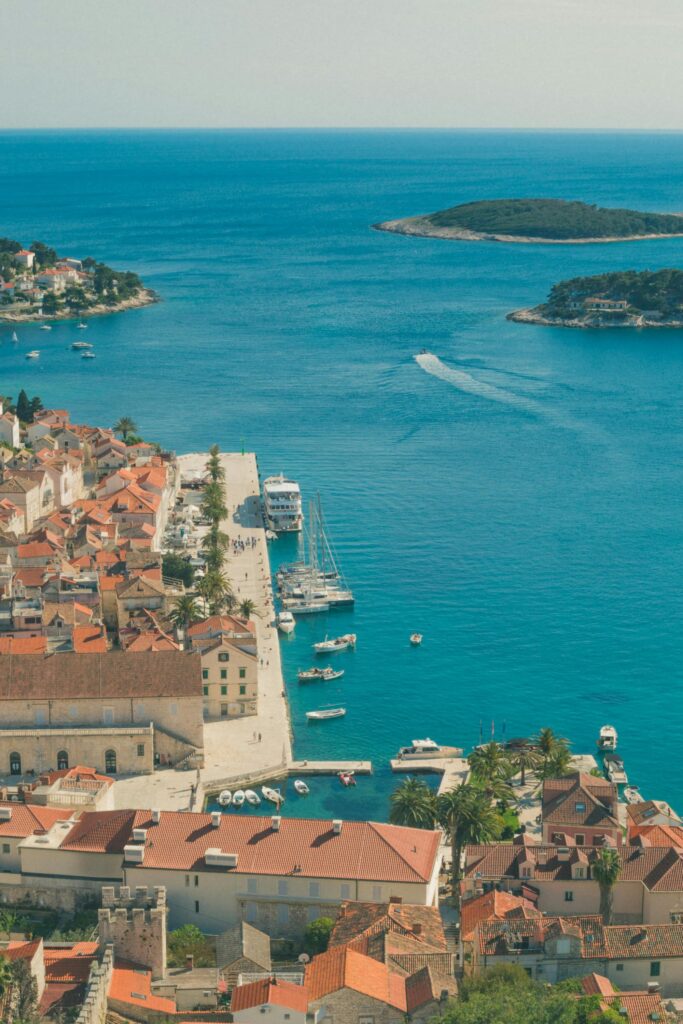
What truly distinguishes the Adriatic from other Mediterranean waters is its extraordinary archipelago. While the western Italian coastline remains largely uninterrupted by islands, the eastern shore—primarily belonging to Croatia—is a dramatic tapestry of over 1,300 islands, islets, and reefs. This remarkable contrast creates two distinctly different coastal experiences: the smooth, alluvial shores of Italy and the deeply indented, karst-dominated coastline of Croatia with its countless bays, coves, and channels.
Croatia’s claim to this maritime wonder is particularly significant, with its coastline stretching over 1,100 miles and encompassing approximately 1,246 islands and islets, though only 47 are permanently inhabited. These islands vary dramatically in size and character—from larger, more developed destinations like Krk, Cres, and Brač to tiny, uninhabited specks of land that appear and disappear with the tides.
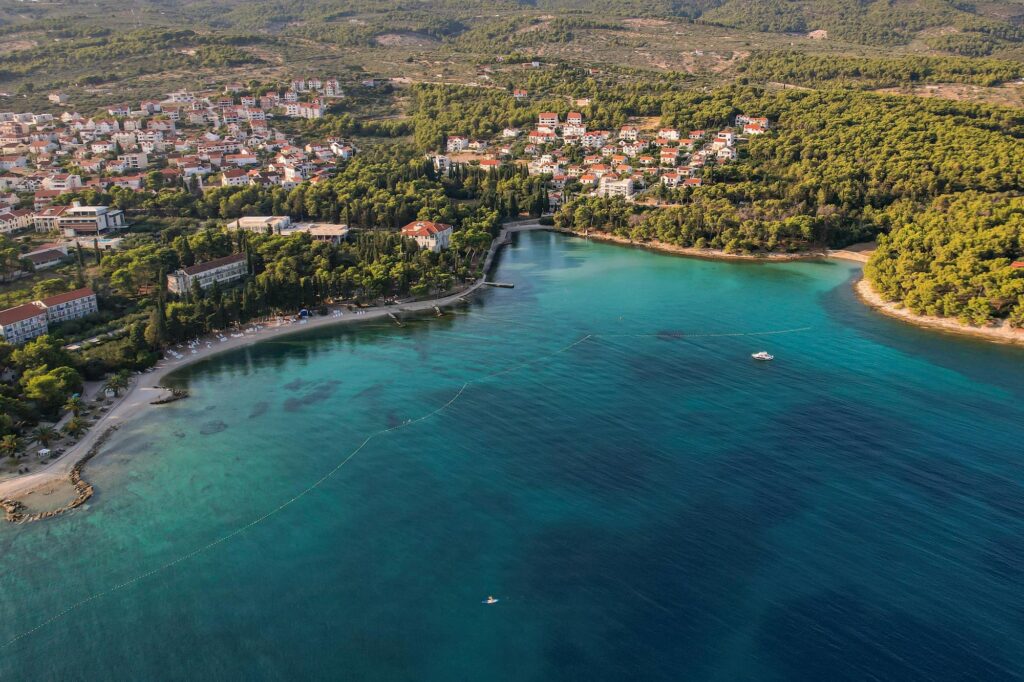
The region’s Mediterranean climate provides ideal conditions for exploration, with hot, dry summers and mild, wet winters. During the peak summer months of July and August, water temperatures reach a pleasant 75-79°F (24-26°C), perfect for swimming and water activities. Discover top activities and experiences in Croatia. The shoulder seasons of late spring and early autumn offer more moderate temperatures and fewer crowds, often considered the ideal time for island hopping adventures.
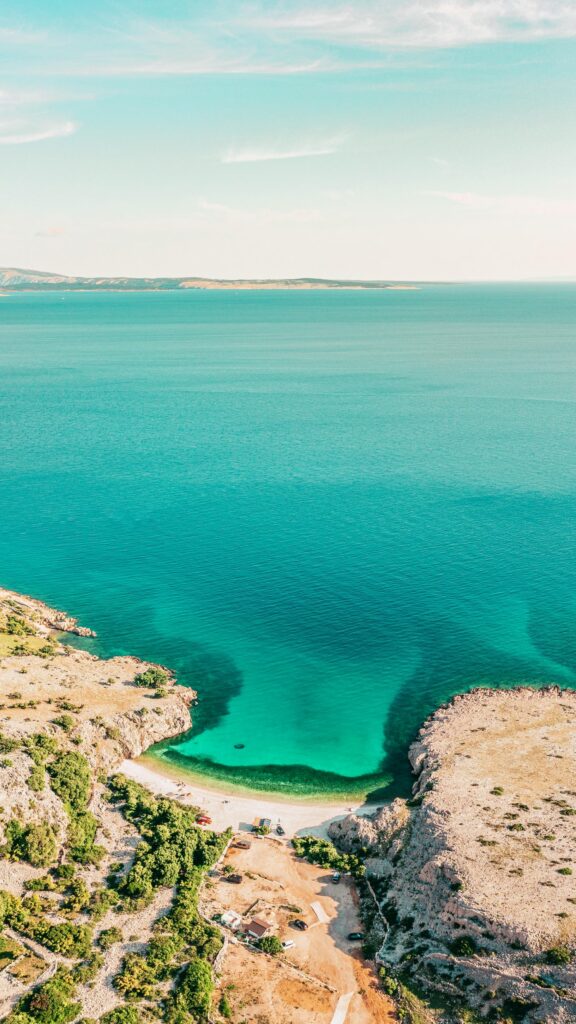
A Brief History of the Adriatic Islands
The Adriatic islands bear witness to a rich tapestry of civilizations that have risen and fallen along these shores for millennia. This historical legacy is etched into the very stones of ancient harbors, medieval towns, and Renaissance palaces that dot the coastline, creating an open-air museum for modern travelers to explore.
Human settlement on these islands dates back to prehistoric times, with archaeological evidence suggesting Neolithic communities established themselves as early as 6000 BCE. However, it was the ancient Greeks who first recognized the strategic and commercial potential of the Adriatic archipelago, establishing colonies on islands like Hvar (then called Pharos) and Vis (Issa) in the 4th century BCE. These early Greek settlements introduced vineyards and olive groves that would become fundamental to the islands’ economies for centuries to come.
The Roman Empire’s expansion brought the entire Adriatic under its control by the 1st century CE, leaving an indelible mark on the region. Roman influence is still visible today in the perfectly preserved palace of Emperor Diocletian in Split, which serves as a gateway to many island-hopping adventures, and in numerous archaeological sites scattered across the islands.
Perhaps no power has left a more visible imprint on the Adriatic islands than the Venetian Republic. From the 10th to the 18th century, Venice gradually extended its dominion over the eastern Adriatic, valuing the islands for their strategic positions, timber resources, and as buffers against Ottoman expansion. The Venetian period bequeathed the islands their most recognizable architectural features: the distinctive bell towers, elegant loggias, and fortified harbors that define towns like Hvar, Korčula, and Rab.
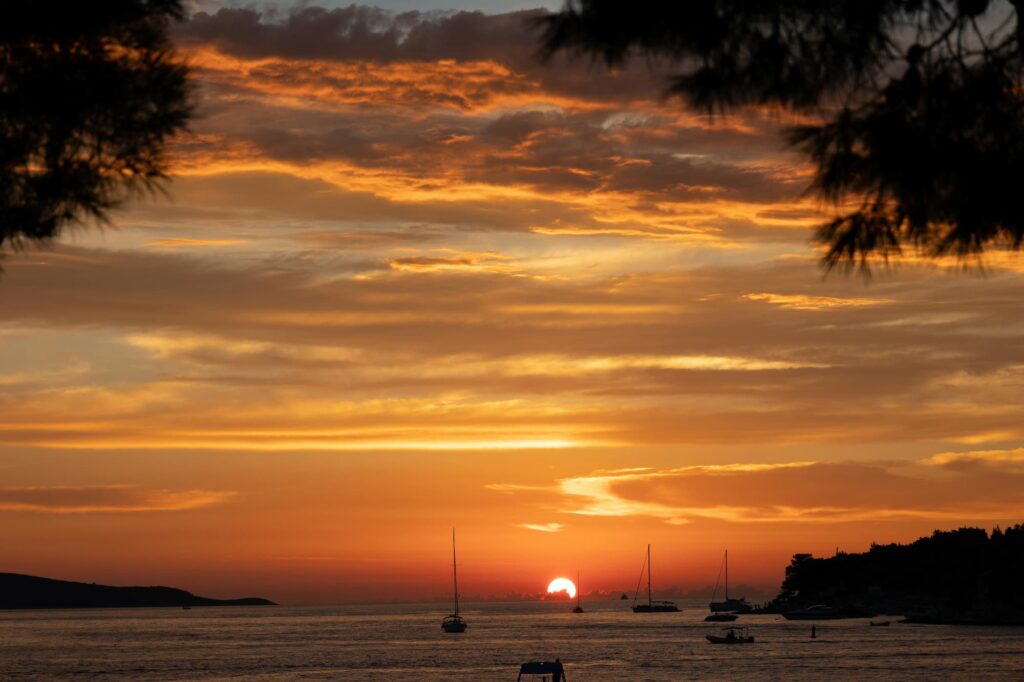
Today, this layered history creates a unique cultural landscape where Roman ruins might stand beside Venetian palaces, early Christian churches, and Habsburg-era public buildings. Island communities maintain traditions that reflect this diverse heritage, from religious processions dating to medieval times to folk dances with ancient origins.
Popular Island Hopping Routes
The beauty of the Adriatic lies not just in its individual destinations but in the journey between them. Island hopping routes along this coastline offer travelers the flexibility to craft their own maritime adventure, whether seeking historical immersion, natural wonders, gastronomic delights, or simply the perfect beach.
“The Classic Route”: Split – Hvar – Korčula – Mljet – Dubrovnik
This quintessential Dalmatian island-hopping experience begins in Split, where Diocletian’s Palace provides a magnificent historical sendoff. From this ancient Roman complex, regular ferries and catamarans connect to Hvar, perhaps Croatia’s most glamorous island. Hvar Town dazzles with its marble streets, 13th-century walls, and vibrant harbor lined with yachts and cafés.
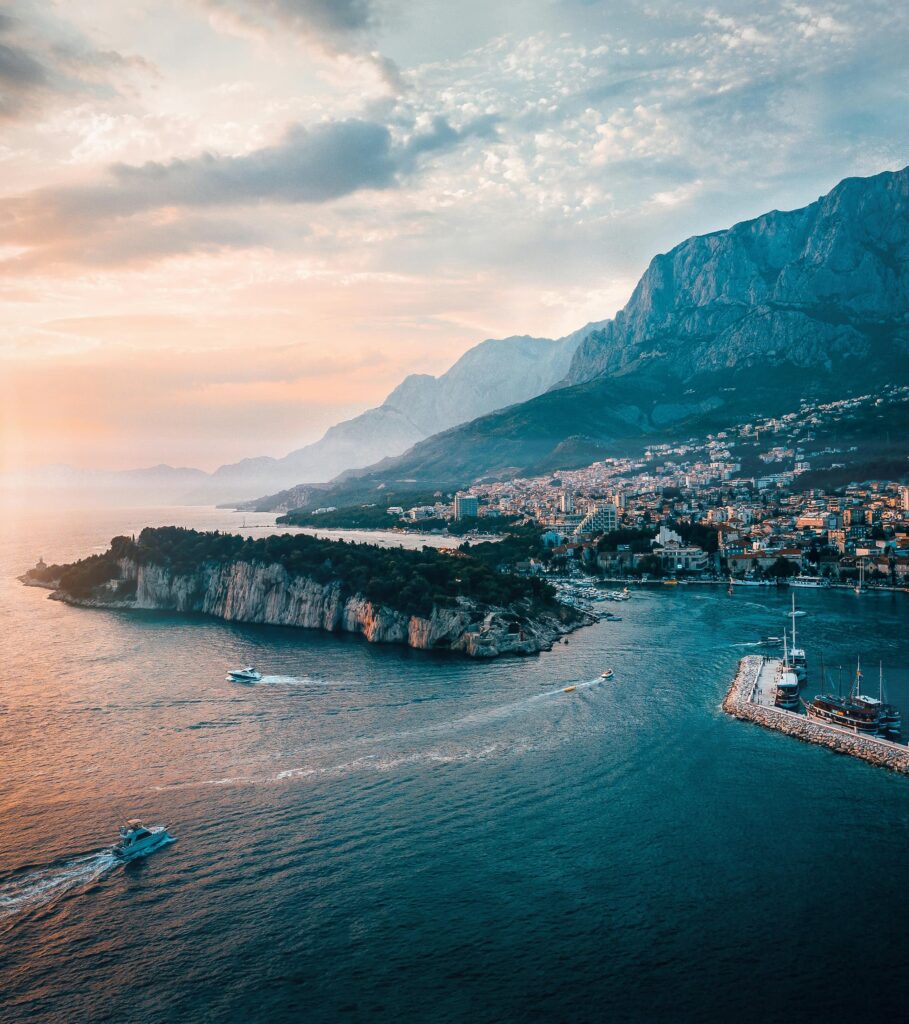
From Hvar, the journey continues to Korčula, an island of dense forests and centuries-old olive groves. Korčula Town, often called “Little Dubrovnik,” enchants with its medieval walls and distinctive herringbone street pattern designed to provide shelter from prevailing winds while allowing sea breezes to circulate.
The next stop, Mljet, provides a tranquil contrast with its unspoiled national park covering the western third of the island. Here, two interconnected saltwater lakes—one featuring a 12th-century Benedictine monastery on a central islet—offer unforgettable swimming and kayaking opportunities.
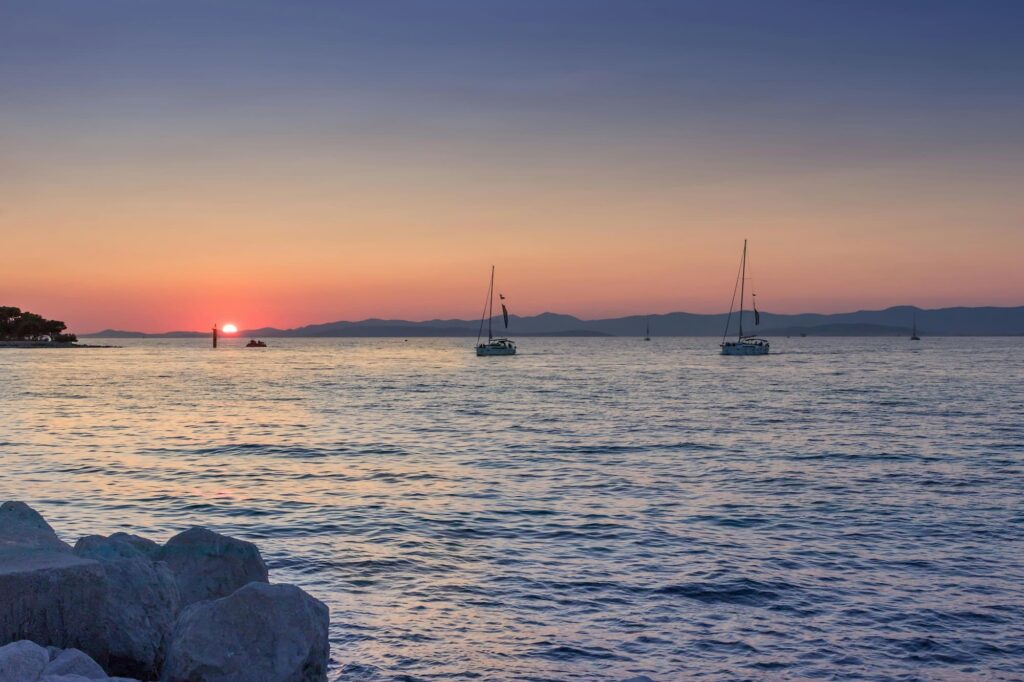
See national parks in Croatia.
This classic route concludes in the “Pearl of the Adriatic,” Dubrovnik, whose perfectly preserved medieval walls and limestone streets have captivated visitors for centuries.
See 9 Best Islands to Visit Near Split.
“The Northern Route”: Zadar – Dugi Otok – Kornati Islands
For travelers seeking less-trodden paths, the northern Adriatic offers a distinctive island-hopping experience beginning in the historic city of Zadar. The first major destination, Dugi Otok (Long Island), lives up to its name with 45 kilometers of coastline featuring dramatic cliffs, serene bays, and the stunning Telašćica Nature Park.
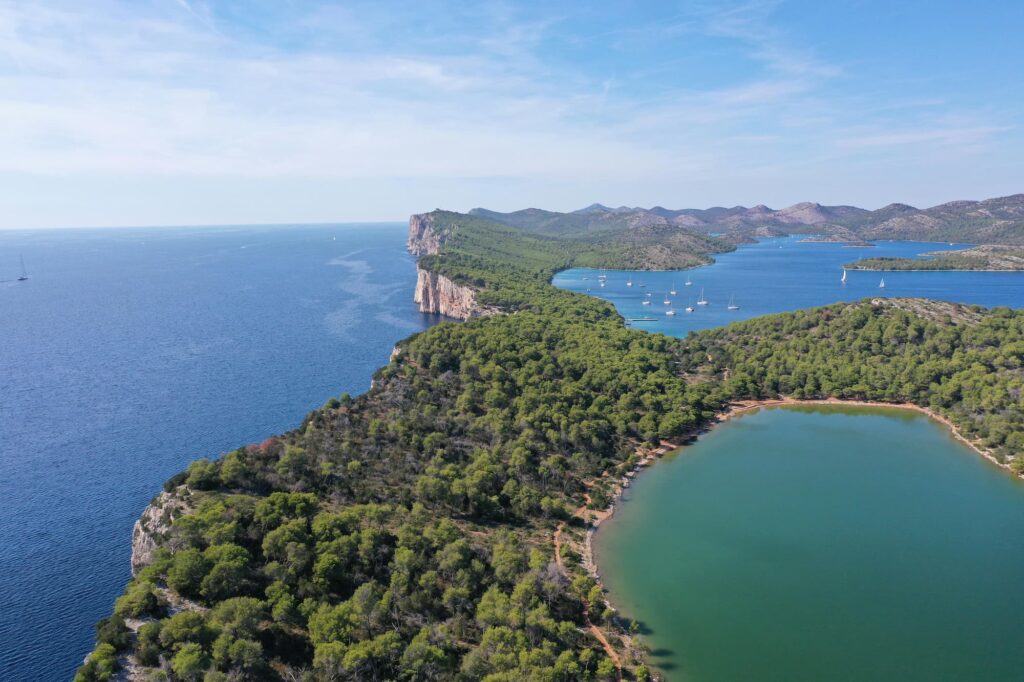
From Dugi Otok, organized excursions venture into the Kornati National Park, an otherworldly archipelago of 89 barren islands described by astronauts as resembling the surface of the moon. These uninhabited islands, stripped of vegetation by centuries of overgrazing, now present a hauntingly beautiful landscape of stark white limestone against deep blue sea.
“The Southern Route”: Dubrovnik – Elafiti Islands – Montenegro Coast
Beginning in Dubrovnik, this route explores the southern reaches of the Adriatic, including a potential cross-border adventure into Montenegrin waters. The journey starts with the nearby Elafiti archipelago—Koločep, Lopud, and Šipan—each offering car-free environments, Renaissance summer villas, and secluded beaches.
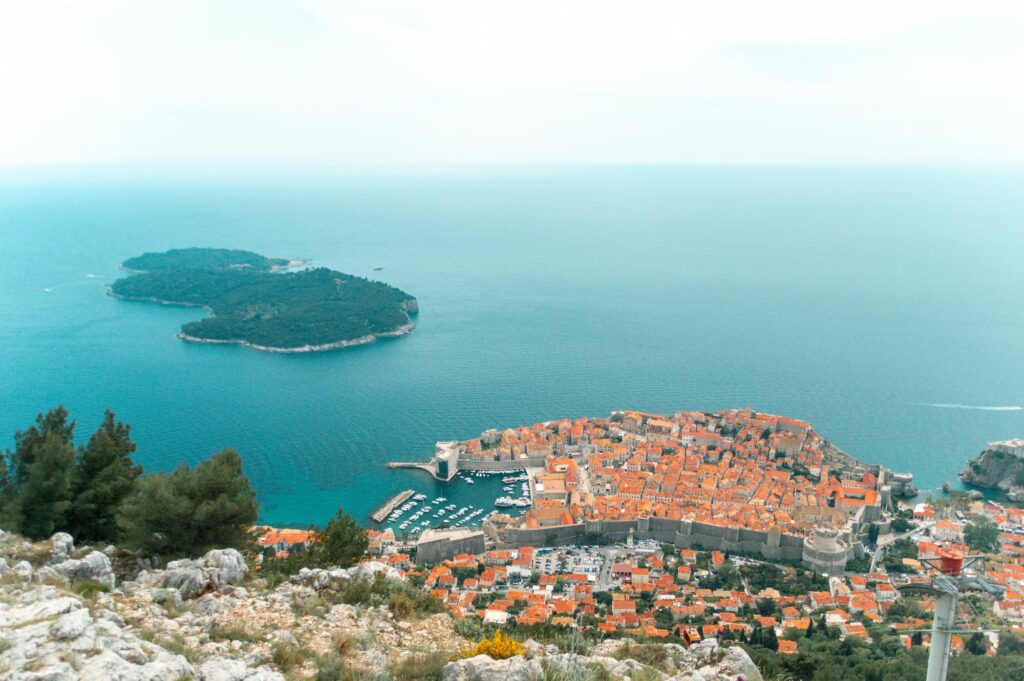
Adventurous travelers can continue south to Montenegro’s Bay of Kotor, a spectacular fjord-like inlet surrounded by towering mountains. The medieval towns of Kotor and Perast showcase Venetian architecture and maritime heritage, while the artificial island of Our Lady of the Rocks tells the story of local sailors and their centuries-old traditions.
Must-Visit Islands of the Adriatic
Hvar: The Glamorous Isle
Hvar has earned its reputation as Croatia’s most glamorous island, where centuries of Venetian influence meet contemporary luxury against a backdrop of lavender fields, olive groves, and crystalline waters. The island’s main hub, Hvar Town, centers around St. Stephen’s Square (Hvarska pjaca), one of the largest and most beautiful old squares in Dalmatia.
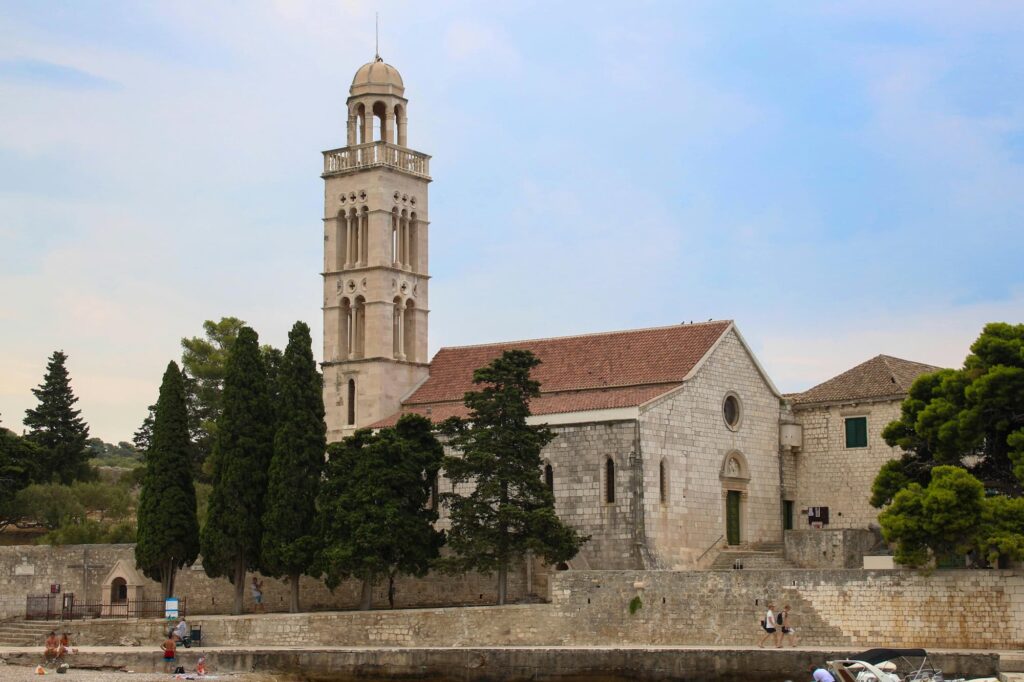
Rising above the town, the imposing Fortica (Spanish Fortress) offers panoramic views that justify the climb, especially at sunset when the Pakleni Islands seem to float on the golden sea. These nearby islets provide perfect day-trip destinations, with water taxis regularly departing from Hvar Town to beaches like Palmižana, where seafood restaurants nestle among pine trees steps from the shore.
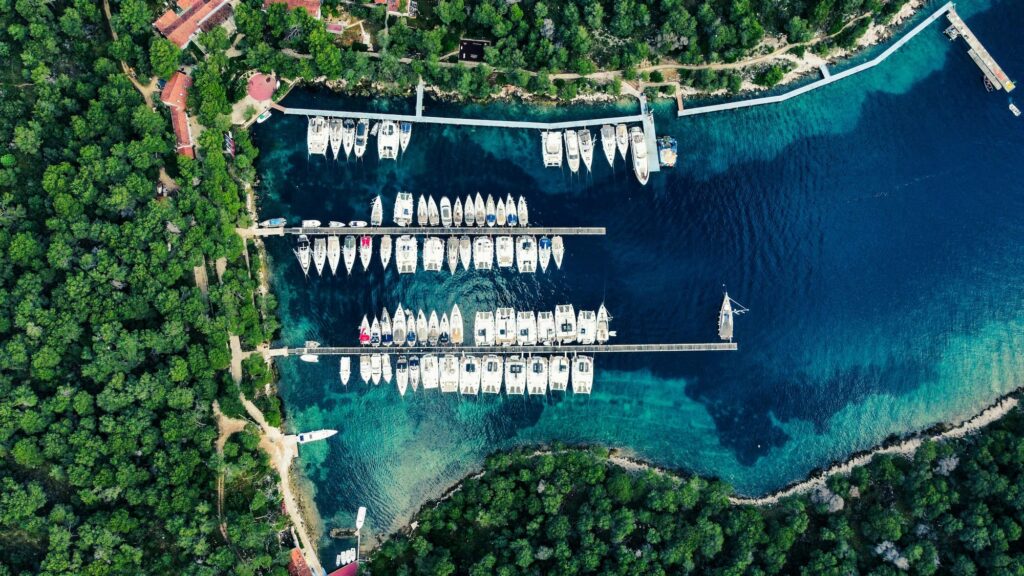
Hvar’s interior reveals yet another face of the island, where lavender fields create purple carpets in early summer, and traditional villages like Velo Grablje host lavender festivals celebrating this fragrant heritage.
Korčula: Medieval Splendor
Korčula captivates visitors with its perfect blend of history, culture, and natural beauty. The island’s crown jewel, Korčula Town, rises from the northeastern coast—a miniature Dubrovnik with medieval walls embracing a treasure trove of architectural wonders. The town’s ingenious design features a herringbone pattern of streets that protects residents from cold winter winds while capturing cooling summer breezes.
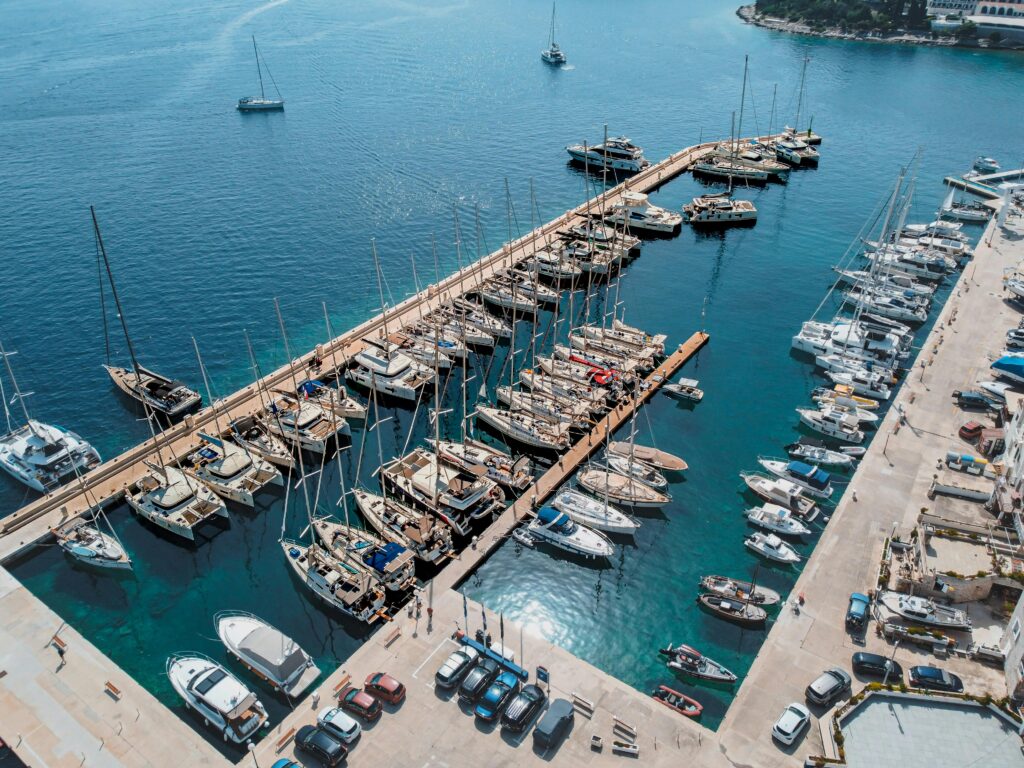
The alleged birthplace of Marco Polo houses a museum dedicated to the famous explorer, while the Gothic-Renaissance Cathedral of St. Mark showcases the work of local master stonemasons, including Marko Andrijić. Korčula’s cultural heritage comes alive during summer evenings with performances of the Moreška sword dance, a dramatic choreographed battle representing the conflict between Christians and Moors that has been performed here since the 16th century.
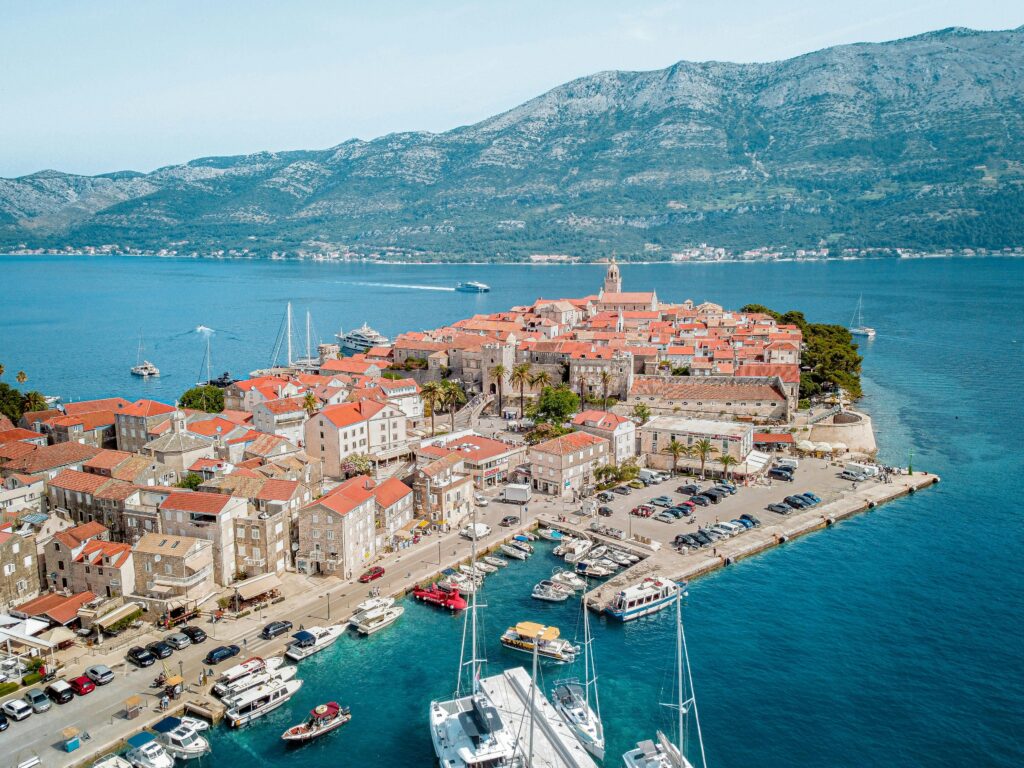
Brač: Stone and Sea
Brač, the largest island in Dalmatia, is defined by its relationship with stone. For millennia, the island’s brilliant white limestone has been quarried and transformed into architectural masterpieces, from Diocletian’s Palace in Split to the White House in Washington, D.C. This stonemason heritage is celebrated in the fascinating Stone Masonry School in Pučišća, where students still learn traditional hand-carving techniques.
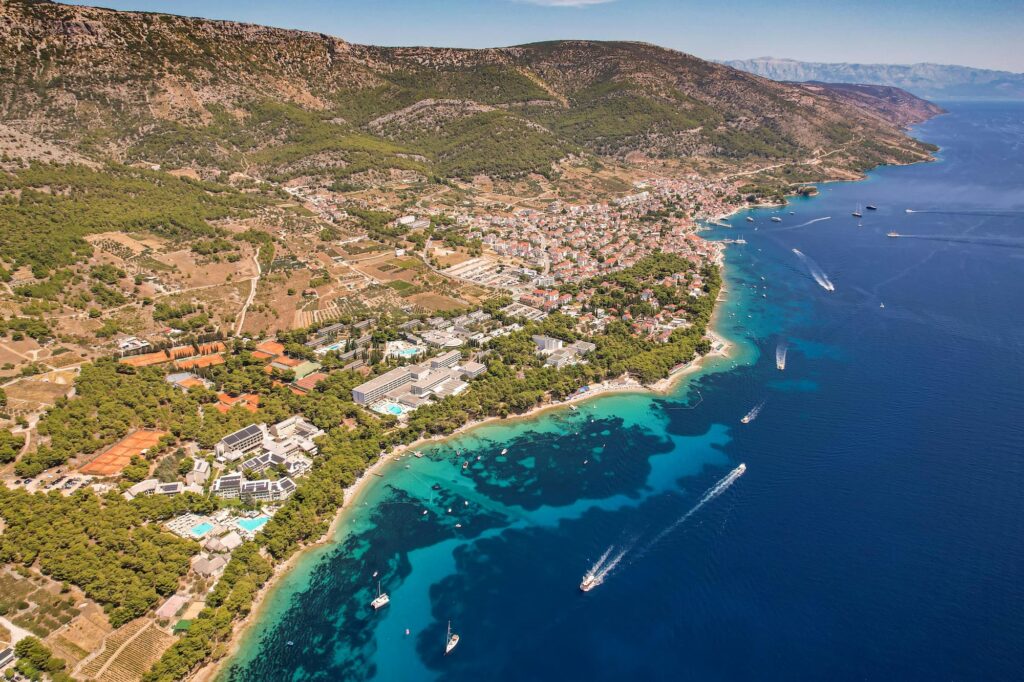
The island’s most famous natural feature, Zlatni Rat (Golden Horn) beach near Bol, has become an iconic Croatian image. This remarkable spit of fine pebbles extends into the sea, changing its shape with currents and winds. Surrounded by crystal-clear waters, it offers perfect conditions for swimming and windsurfing, with consistent afternoon winds attracting water sports enthusiasts from around the world.
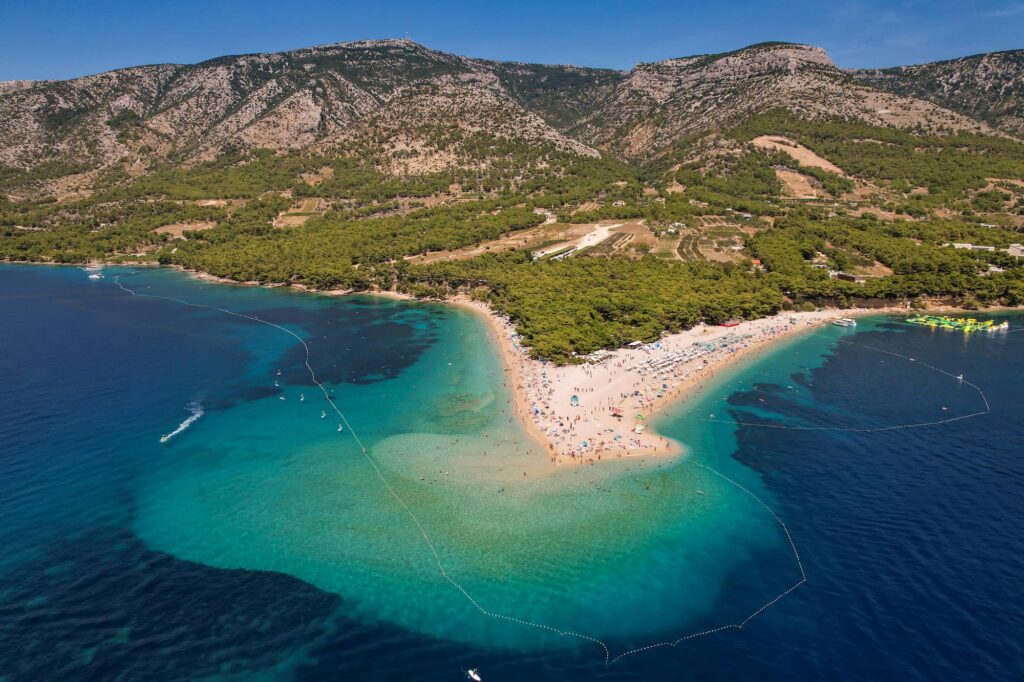
Vis: Remote Beauty
Until 1989, Vis was closed to foreign visitors, serving as a Yugoslav military base during the Cold War. This isolation preserved the island from commercial development and helped maintain its authentic character, making it today’s destination of choice for travelers seeking the “unspoiled Mediterranean.”
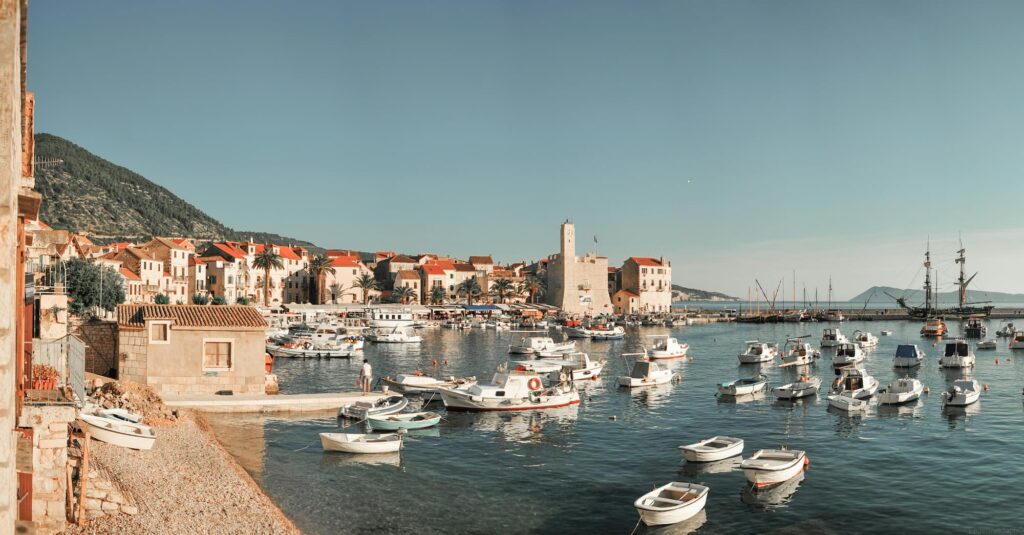
Vis gained international attention as the filming location for “Mamma Mia: Here We Go Again,” but its true star attractions are natural rather than cinematic. The Blue Cave on nearby Biševo Island creates an otherworldly blue glow when sunlight reflects through an underwater entrance, while Stiniva Bay, accessible only by boat or a steep hike, forms a nearly enclosed amphitheater of towering cliffs embracing a pebble beach.
Mljet: The Green Isle
Often described as Croatia’s most enchanting island, Mljet offers a perfect escape into nature, with nearly a third of its territory protected as a national park. Legend claims that Odysseus spent seven years here with the nymph Calypso, and the island’s serene beauty makes such mythological associations entirely believable.
The island’s defining feature is its pair of interconnected saltwater lakes—Veliko and Malo Jezero (Large and Small Lake)—formed thousands of years ago when sea caves collapsed. In the middle of the larger lake stands the islet of St. Mary, home to a 12th-century Benedictine monastery that now houses a restaurant.
Transportation Options for Island Hopping
Navigating between the Adriatic islands offers travelers a variety of transportation methods, each with its own advantages and character. From public ferries that connect major destinations to private yacht charter in Croatia that allow for ultimate freedom, the choice of transportation significantly shapes the island hopping experience.
Ferry Services: The Backbone of Island Connectivity
Public ferry services form the essential infrastructure of Adriatic island hopping, with two main companies dominating the routes. Jadrolinija, the state-owned ferry company, operates the most extensive network, connecting virtually all inhabited islands to the mainland with both car ferries and passenger-only catamarans. Krilo (Kapetan Luka) offers high-speed catamaran services on popular routes, particularly in Central Dalmatia and Southern Dalmatia.
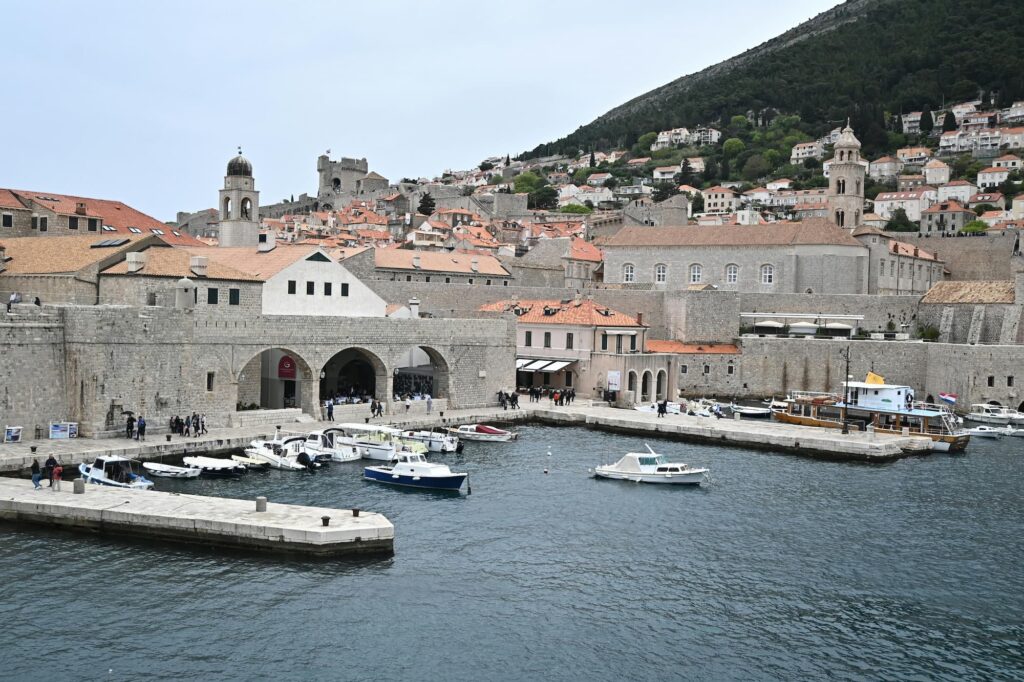
Car ferries provide the most economical option, with tickets typically ranging from €3-10 per adult passenger and €20-40 for vehicles, depending on the route length. These larger vessels operate year-round to most islands, though with reduced frequency during winter months.
High-speed catamarans significantly reduce travel time—the Split to Hvar journey takes approximately one hour by catamaran compared to two hours by car ferry—but come with higher ticket prices (typically €10-20 per person) and do not transport vehicles.
Private Yacht Charters: Freedom on the Water
For travelers seeking maximum flexibility and a more immersive maritime experience, chartering a private yacht represents the ultimate way to explore the Adriatic islands. Croatia has developed one of Europe’s most sophisticated yacht charter industries, with options ranging from affordable bareboat sailboats to luxury crewed motor yachts.
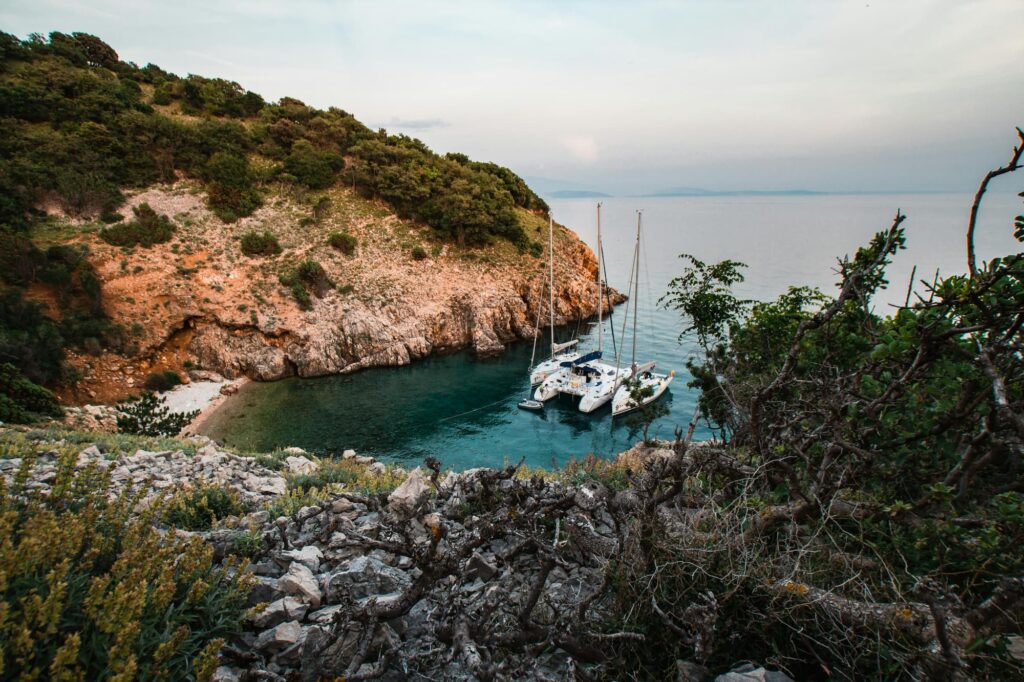
Bareboat charters—where travelers rent a vessel without professional crew—offer the greatest sense of adventure and typically represent the most economical charter option. Prices start from around €2,000 per week for a basic 32-foot sailboat in shoulder season, rising to €3,000-5,000 for a well-equipped 45-foot vessel during peak summer months.
Skippered charters include a professional captain who handles navigation and vessel operation, allowing guests to relax while benefiting from local knowledge about hidden coves, authentic restaurants, and optimal swimming spots.
Yacht Charter Croatia: The Ultimate Island Hopping Experience
For travelers seeking the perfect blend of freedom, luxury, and authentic exploration, yacht charter represents the ultimate way to experience the Adriatic’s island wonders. Croatia has emerged as Europe’s premier sailing destination, offering ideal conditions for both seasoned sailors and first-time charterers looking to discover the coastline’s hidden treasures at their own pace.
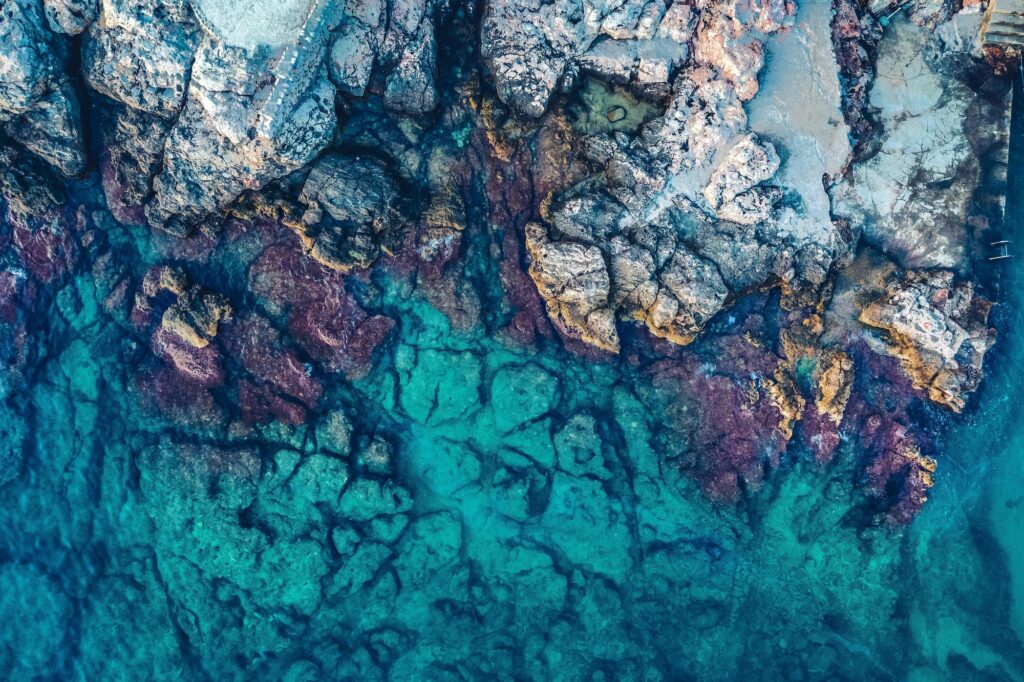
The Adriatic Sea provides near-perfect sailing conditions, particularly from May through October. Gentle morning breezes typically give way to the reliable afternoon Maestral wind (8-15 knots from the northwest), creating ideal sailing conditions before calming again by evening—perfect for peaceful overnight stays in secluded bays. The sea’s moderate tides and currents, excellent visibility, and abundance of protected anchorages make it suitable for sailors of all experience levels.
Croatia’s exceptional sailing infrastructure includes over 50 fully-equipped marinas strategically positioned along the coast and on major islands. These modern facilities offer secure berths, electricity and water connections, shower facilities, and often restaurants and technical support. Beyond official marinas, countless small harbor towns welcome visiting yachts with basic facilities and authentic local atmosphere, while hundreds of sheltered bays provide idyllic overnight anchorages in complete tranquility.

The true advantage of exploring by yacht becomes apparent when you discover your own private cove for swimming, anchor off a tiny islet not served by ferries, or change your itinerary spontaneously to follow recommendations from locals you meet along the way. With over 1,300 islands and a coastline stretching more than 1,100 miles, the possibilities for exploration are virtually limitless.
Viravira.co, one of Europe’s leading yacht charter marketplaces, offers an extensive selection of over 2,400 vessels available in Croatia, ranging from classic sailing yachts to luxury catamarans and motor yachts. Their platform allows travelers to compare options, check real-time availability, and book directly with boat owners or charter companies. With transparent pricing, verified reviews, and flexible cancellation policies, Viravira simplifies the charter process while offering competitive rates across all vessel categories.
Best Time to Visit the Adriatic Islands
The Adriatic islands transform dramatically with the seasons, each period offering a distinct experience for travelers. Understanding these seasonal rhythms is essential for planning an island-hopping adventure that aligns with your preferences for weather, crowds, activities, and budget.
Peak Season (July-August)
High summer brings the Adriatic to life with vibrant energy, as coastal towns and islands pulse with activity. During these months, daytime temperatures typically range from 80-90°F (26-32°C), while sea temperatures reach a pleasant 75-79°F (24-26°C)—perfect for swimming, snorkeling, and water sports. The weather is reliably sunny with minimal rainfall, and the Maestral wind provides refreshing afternoon breezes ideal for sailing.
This period offers the most comprehensive transportation options, with ferry and catamaran services operating at maximum frequency—often with multiple daily connections between popular islands. Restaurants, beach bars, and cultural venues operate at full capacity, with evening concerts, festivals, and events creating a lively atmosphere in island towns.
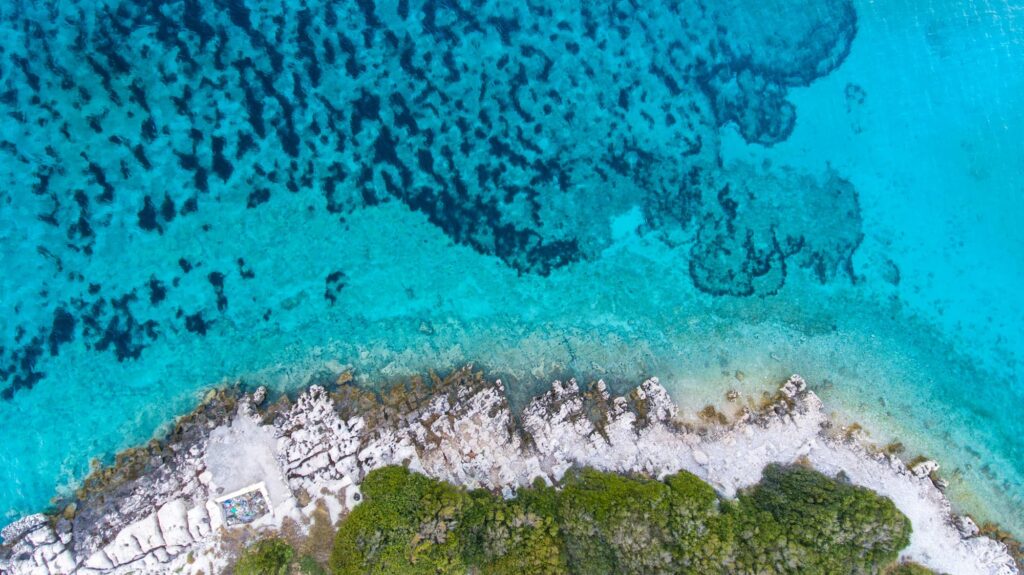
However, these advantages come with significant trade-offs. Accommodation prices can double or triple compared to shoulder seasons, popular beaches become crowded, and restaurants often require reservations days in advance.
Shoulder Seasons (May-June and September-October)
Many experienced Adriatic travelers consider the shoulder seasons the ideal time to visit the islands. In late spring and early autumn, daytime temperatures typically range from 68-80°F (20-27°C)—comfortable for exploration without the intense heat of midsummer. Sea temperatures in June and September remain warm enough for swimming (68-75°F/20-24°C), while May and October offer enjoyable conditions on warmer days.
These periods bring significant advantages for island hoppers. Accommodation prices drop by 30-50% compared to peak season, while availability improves dramatically. Beaches and historic sites can be enjoyed without crowds, and restaurants offer more attentive service with shorter waits.
Culinary Delights of the Adriatic Islands
The gastronomic landscape of the Adriatic islands represents one of the purest expressions of Mediterranean cuisine, where fresh seafood, locally grown produce, aromatic herbs, and quality olive oil combine in dishes that are both elegantly simple and profoundly flavorful. Island cooking reflects centuries of cultural influences—Greek, Roman, Venetian, and Austro-Hungarian—while maintaining a distinctive character shaped by isolation and the necessity of self-sufficiency.
Island cuisine begins with the sea itself. The crystal-clear waters of the Adriatic yield an impressive variety of fish and seafood that forms the cornerstone of local diets. White fish like sea bass (brancin), sea bream (orada), and dentex (zubatac) are typically prepared in the simplest manner possible—grilled over open flames with nothing more than olive oil, garlic, and a squeeze of lemon. This minimalist approach, known locally as “na žaru” (on the grill), allows the exceptional freshness and quality of the fish to shine through.
Shellfish and cephalopods feature prominently in island kitchens. Octopus appears in slow-cooked stews (octopus peka), marinated salads, and risottos colored with its ink. Squid is stuffed with breadcrumbs, cheese, and ham (lignje na punjene) or simply fried in light batter. Mussels are steamed with white wine, garlic, and parsley in a preparation known as buzara, while scampi and langoustines are briefly grilled or added to pasta dishes.
To truly experience island cuisine, visitors should seek out traditional konobas—family-run taverns that typically occupy historic stone buildings, often former wine cellars or olive oil production facilities. These authentic establishments serve as living museums of culinary heritage, where recipes passed through generations are prepared with minimal concession to modern tastes or techniques. See Croatian cuisine must-try dishes.
Practical Tips for Adriatic Island Hopping
A successful island-hopping adventure along the Adriatic Coast requires thoughtful preparation and practical knowledge that goes beyond simply choosing destinations. These insider tips will help you navigate the logistics, cultural nuances, and unexpected challenges of exploring Croatia’s magnificent archipelago, ensuring a smooth and memorable journey.
Packing Essentials
The Adriatic’s Mediterranean climate and island-hopping lifestyle call for strategic packing:
- Lightweight, quick-drying clothing is essential, as you’ll likely be transitioning frequently between water and land activities. Include at least one light sweater or jacket even in summer, as evening sea breezes can be surprisingly cool.
- Proper footwear should include water shoes with sturdy soles for navigating the rocky beaches and sea urchin-populated shallows characteristic of the Adriatic. Comfortable walking shoes are equally important for exploring historic towns with cobblestone streets and hillside viewpoints.
- Sun protection is critical in the intense Mediterranean sun. Pack high-SPF sunscreen (reef-safe if possible), a wide-brimmed hat, quality sunglasses, and a light cover-up for extended sun exposure.
Budgeting and Money Matters
Financial planning for an Adriatic island-hopping adventure requires understanding several key factors:
- Croatia uses the Euro (€) as its official currency as of January 2023. While credit cards are widely accepted in tourist areas, smaller establishments and remote islands may operate on cash only, making it essential to carry sufficient euros, particularly when visiting less-developed islands.
- ATMs are available on most inhabited islands, but they can occasionally run out of cash during peak season. It’s advisable to withdraw sufficient funds when on the mainland or larger islands like Hvar and Korčula.
- Island pricing generally exceeds mainland costs by 10-30%, with more remote islands commanding the highest premiums. This “island tax” reflects the logistics of transporting goods and the seasonal nature of tourism economies.
| Category | Details |
| Region | Adriatic Sea – stretching from Italy to Croatia, with over 1,300 islands |
| Top Activities | Island hopping, sailing, snorkeling, exploring medieval towns, dining at konobas |
| Popular Routes | • Split – Hvar – Korčula – Mljet – Dubrovnik • Zadar – Dugi Otok – Kornati • Dubrovnik – Elafiti – Montenegro Coast |
| Must-Visit Islands | Hvar, Korčula, Brač, Vis, Mljet, Dugi Otok, Elafiti Islands |
| Best Time to Visit | May–June & September–October (shoulder seasons) July–August (peak season with more transport options) |
| Transportation Options | Public ferries (Jadrolinija, Krilo), high-speed catamarans, private tours, yacht charters |
| Yacht Charter Info | From €2,000/week for bareboat sailboats Skippered & crewed options available via viravira.co |
| Weather | Summer: 26–32°C air, 24–26°C sea Shoulder seasons: 20–27°C air, 20–24°C sea |
| Culinary Highlights | Grilled fish, octopus peka, buzara mussels, local wine, olive oil, seafood pastas |
| Cultural Sites | Diocletian’s Palace (Split), Fortica Fortress (Hvar), Marco Polo House (Korčula), Roman ruins, Venetian architecture |
Conclusion
Island hopping along the Adriatic Coast represents one of Europe’s most rewarding travel experiences—a journey that combines natural splendor, historical depth, cultural authenticity, and culinary excellence into an unforgettable maritime adventure. As you navigate between these enchanted islands, each with its own distinct character and charm, you’ll discover a Mediterranean that still exists beyond the reach of mass tourism, where traditions centuries in the making continue to thrive. Alternatively check out hiking trails in Croatia.
The true magic of the Adriatic archipelago lies in its remarkable diversity contained within a relatively compact region. In a single week of island hopping, you might wander through medieval streets where Marco Polo once walked, swim in secluded coves accessible only by boat, sample wines from grapes grown nowhere else on earth, and watch the sunset paint limestone cliffs in shades of gold and rose. Each island adds a new chapter to your journey, a fresh perspective on this complex and captivating corner of the Mediterranean.
Whether you choose to explore by public ferry, private yacht charter, or organized tour—whether you visit in the vibrant energy of summer or the tranquil authenticity of shoulder seasons—the Adriatic islands reward curious travelers with experiences that engage all the senses. Here, the journey itself becomes as meaningful as the destinations, with each crossing between islands offering time for reflection and anticipation.
As you plan your own island-hopping adventure along this magnificent coastline, remember that the greatest luxury in our hyperconnected world is the opportunity to disconnect, to synchronize with the rhythms of island life, and to discover places where nature, history, and culture exist in perfect harmony. The timeless allure of the Adriatic islands awaits, promising not just a vacation but a journey of discovery that will call you back to these shores for years to come.
FAQs
Island hopping in Croatia is a travel style where visitors explore multiple islands along the Adriatic Coast by ferry, tour, or private yacht. It’s popular because it combines stunning nature, historical towns, and cultural experiences in a single trip, offering variety and flexibility.
Top islands include Hvar (glamorous nightlife and lavender fields), Korčula (medieval charm), Brač (home to Zlatni Rat beach), Vis (remote and authentic), and Mljet (lush national park with saltwater lakes).
The best time is during the shoulder seasons of May–June and September–October. These months offer warm weather, fewer crowds, and lower prices compared to the peak summer season of July–August.
You can island hop using public ferries (Jadrolinija, Krilo), high-speed catamarans, private boat tours, or by chartering a yacht for maximum flexibility and privacy.
Yes, chartering a yacht gives you freedom to create a personalized route, access remote coves, and enjoy a luxurious, immersive experience. It’s ideal for groups, families, or couples seeking adventure and comfort.

